Enguang Wang
Enhancing Visual Grounding for GUI Agents via Self-Evolutionary Reinforcement Learning
May 18, 2025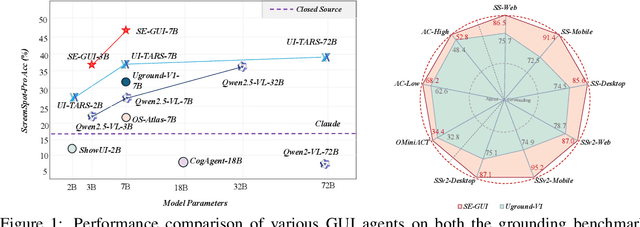
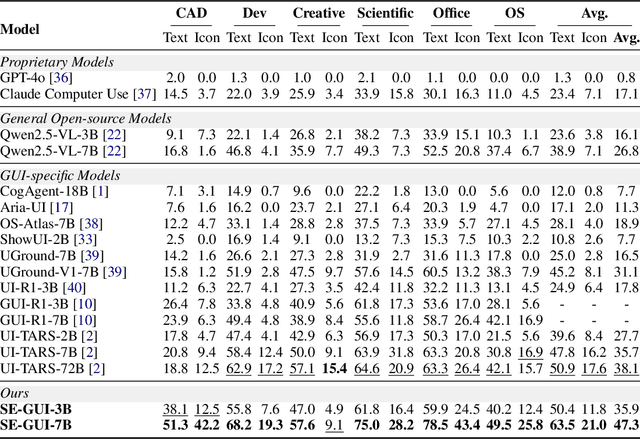
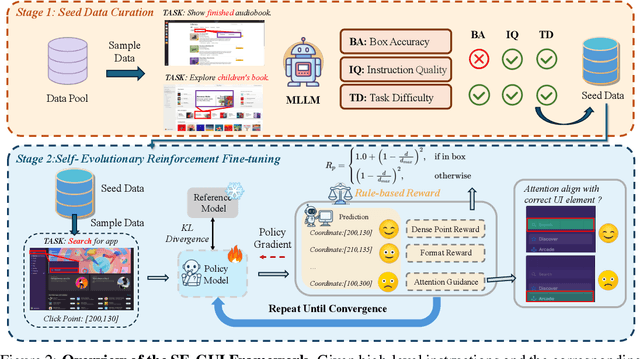

Abstract:Graphical User Interface (GUI) agents have made substantial strides in understanding and executing user instructions across diverse platforms. Yet, grounding these instructions to precise interface elements remains challenging, especially in complex, high-resolution, professional environments. Traditional supervised finetuning (SFT) methods often require large volumes of diverse data and exhibit weak generalization. To overcome these limitations, we introduce a reinforcement learning (RL) based framework that incorporates three core strategies: (1) seed data curation to ensure high quality training samples, (2) a dense policy gradient that provides continuous feedback based on prediction accuracy, and (3) a self evolutionary reinforcement finetuning mechanism that iteratively refines the model using attention maps. With only 3k training samples, our 7B-parameter model achieves state-of-the-art results among similarly sized models on three grounding benchmarks. Notably, it attains 47.3\% accuracy on the ScreenSpot-Pro dataset, outperforming much larger models, such as UI-TARS-72B, by a margin of 24.2\%. These findings underscore the effectiveness of RL-based approaches in enhancing GUI agent performance, particularly in high-resolution, complex environments.
Restoring Forgotten Knowledge in Non-Exemplar Class Incremental Learning through Test-Time Semantic Evolution
Mar 21, 2025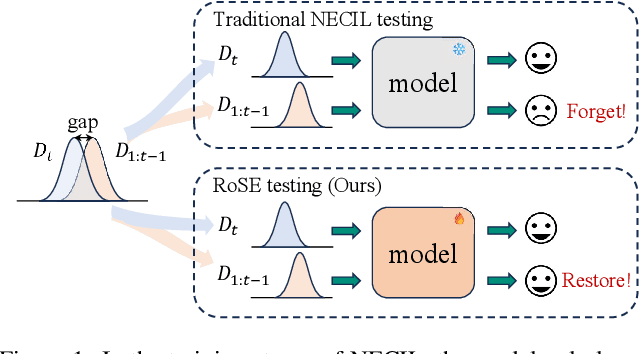
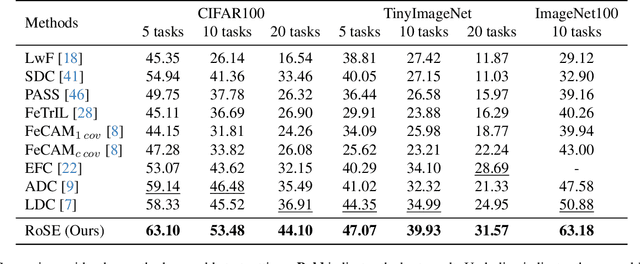
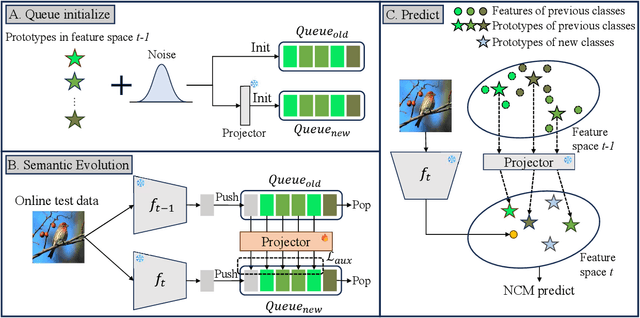
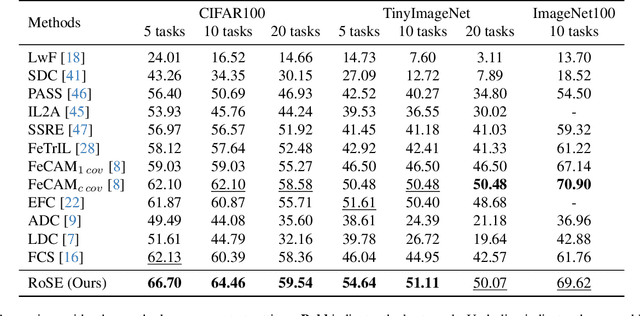
Abstract:Continual learning aims to accumulate knowledge over a data stream while mitigating catastrophic forgetting. In Non-exemplar Class Incremental Learning (NECIL), forgetting arises during incremental optimization because old classes are inaccessible, hindering the retention of prior knowledge. To solve this, previous methods struggle in achieving the stability-plasticity balance in the training stages. However, we note that the testing stage is rarely considered among them, but is promising to be a solution to forgetting. Therefore, we propose RoSE, which is a simple yet effective method that \textbf{R}est\textbf{o}res forgotten knowledge through test-time \textbf{S}emantic \textbf{E}volution. Specifically designed for minimizing forgetting, RoSE is a test-time semantic drift compensation framework that enables more accurate drift estimation in a self-supervised manner. Moreover, to avoid incomplete optimization during online testing, we derive an analytical solution as an alternative to gradient descent. We evaluate RoSE on CIFAR-100, TinyImageNet, and ImageNet100 datasets, under both cold-start and warm-start settings. Our method consistently outperforms most state-of-the-art (SOTA) methods across various scenarios, validating the potential and feasibility of test-time evolution in NECIL.
Learning Part Knowledge to Facilitate Category Understanding for Fine-Grained Generalized Category Discovery
Mar 21, 2025Abstract:Generalized Category Discovery (GCD) aims to classify unlabeled data containing both seen and novel categories. Although existing methods perform well on generic datasets, they struggle in fine-grained scenarios. We attribute this difficulty to their reliance on contrastive learning over global image features to automatically capture discriminative cues, which fails to capture the subtle local differences essential for distinguishing fine-grained categories. Therefore, in this paper, we propose incorporating part knowledge to address fine-grained GCD, which introduces two key challenges: the absence of annotations for novel classes complicates the extraction of the part features, and global contrastive learning prioritizes holistic feature invariance, inadvertently suppressing discriminative local part patterns. To address these challenges, we propose PartGCD, including 1) Adaptive Part Decomposition, which automatically extracts class-specific semantic parts via Gaussian Mixture Models, and 2) Part Discrepancy Regularization, enforcing explicit separation between part features to amplify fine-grained local part distinctions. Experiments demonstrate state-of-the-art performance across multiple fine-grained benchmarks while maintaining competitiveness on generic datasets, validating the effectiveness and robustness of our approach.
Early Preparation Pays Off: New Classifier Pre-tuning for Class Incremental Semantic Segmentation
Jul 19, 2024



Abstract:Class incremental semantic segmentation aims to preserve old knowledge while learning new tasks, however, it is impeded by catastrophic forgetting and background shift issues. Prior works indicate the pivotal importance of initializing new classifiers and mainly focus on transferring knowledge from the background classifier or preparing classifiers for future classes, neglecting the flexibility and variance of new classifiers. In this paper, we propose a new classifier pre-tuning~(NeST) method applied before the formal training process, learning a transformation from old classifiers to generate new classifiers for initialization rather than directly tuning the parameters of new classifiers. Our method can make new classifiers align with the backbone and adapt to the new data, preventing drastic changes in the feature extractor when learning new classes. Besides, we design a strategy considering the cross-task class similarity to initialize matrices used in the transformation, helping achieve the stability-plasticity trade-off. Experiments on Pascal VOC 2012 and ADE20K datasets show that the proposed strategy can significantly improve the performance of previous methods. The code is available at \url{https://github.com/zhengyuan-xie/ECCV24_NeST}.
GET: Unlocking the Multi-modal Potential of CLIP for Generalized Category Discovery
Mar 15, 2024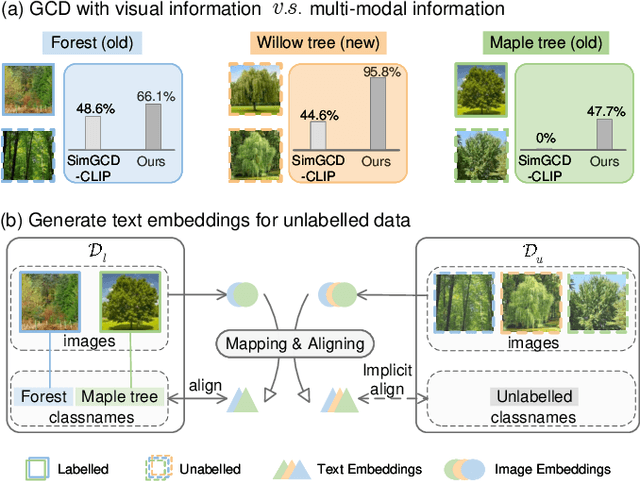
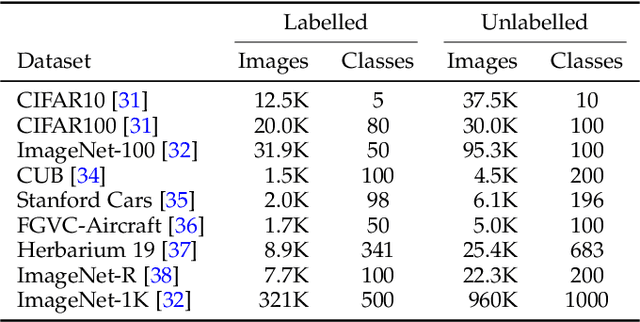
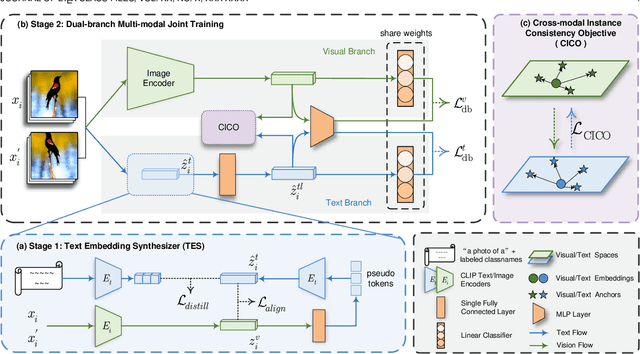

Abstract:Given unlabelled datasets containing both old and new categories, generalized category discovery (GCD) aims to accurately discover new classes while correctly classifying old classes, leveraging the class concepts learned from labeled samples. Current GCD methods only use a single visual modality of information, resulting in poor classification of visually similar classes. Though certain classes are visually confused, their text information might be distinct, motivating us to introduce text information into the GCD task. However, the lack of class names for unlabelled data makes it impractical to utilize text information. To tackle this challenging problem, in this paper, we propose a Text Embedding Synthesizer (TES) to generate pseudo text embeddings for unlabelled samples. Specifically, our TES leverages the property that CLIP can generate aligned vision-language features, converting visual embeddings into tokens of the CLIP's text encoder to generate pseudo text embeddings. Besides, we employ a dual-branch framework, through the joint learning and instance consistency of different modality branches, visual and semantic information mutually enhance each other, promoting the interaction and fusion of visual and text embedding space. Our method unlocks the multi-modal potentials of CLIP and outperforms the baseline methods by a large margin on all GCD benchmarks, achieving new state-of-the-art. The code will be released at \url{https://github.com/enguangW/GET}.
 Add to Chrome
Add to Chrome Add to Firefox
Add to Firefox Add to Edge
Add to Edge